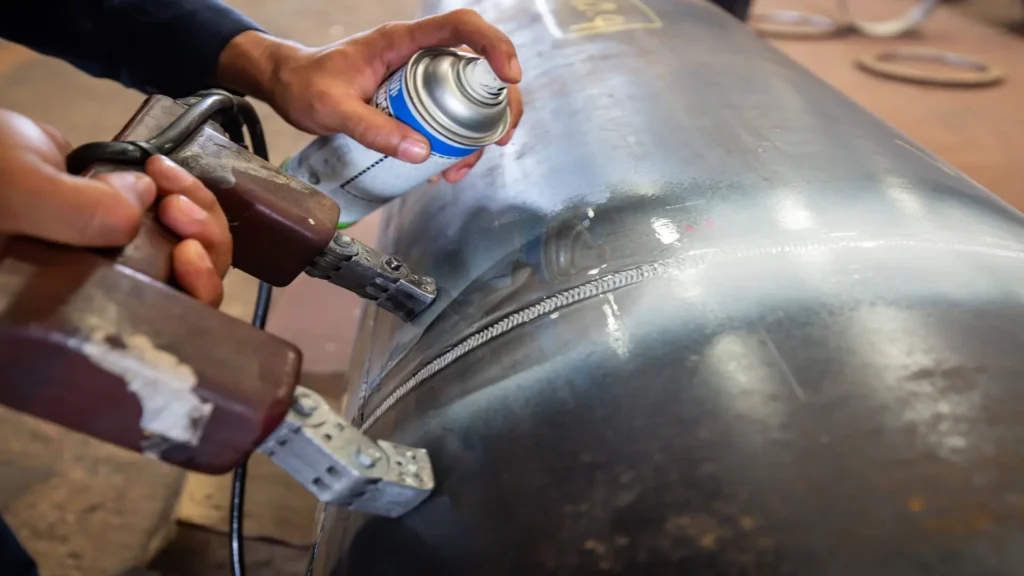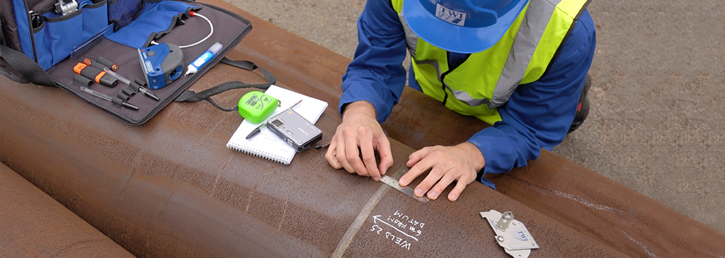Comprehending the Basics of Welding Evaluation to Guarantee Quality and Safety
In the world of modern-day design, welding evaluation stands as a cornerstone for ensuring both the quality and safety and security of architectural developments. The process entails a thorough evaluation of welded joints, using innovative methods such as ultrasonic and radiographic testing to spot hidden blemishes. The experience of licensed inspectors is crucial, as they link the space in between academic standards and sensible application. Their function extends past mere discovery, including the documentation and interaction of findings to pertinent stakeholders. Yet, what are the nuances of these inspection techniques that make them essential for keeping structural honesty?

Importance of Welding Evaluation
In the realm of commercial manufacture, the value of welding assessment can not be overstated. Welding inspection plays a critical duty in making sure the stability, safety, and long life of bonded structures (Welding Inspection Madison).
The process of welding naturally includes complex variables, consisting of temperature, material properties, and ecological conditions, every one of which can influence the quality of the weld. A detailed inspection identifies flaws such as fractures, porosity, and insufficient combination, which can compromise the toughness and reliability of the weld. By detecting these problems early, corrective activities can be taken, thus lowering the danger of failing and connected prices.
Furthermore, welding examination contributes to governing compliance, as several industries are controlled by strict safety and security standards and standards. Failing to adhere to these laws can cause financial fines and legal obligations. Inevitably, welding evaluation not just safeguards physical frameworks but likewise promotes and protects human lives market online reputations.

Trick Welding Examination Methods
Although welding assessment is essential to ensuring the quality and safety of welded structures, it is the certain techniques utilized that establish the performance of the examination procedure. Key welding inspection methods can be broadly categorized into non-destructive screening (NDT) and destructive screening. Non-destructive screening approaches such as aesthetic examination, ultrasonic screening, radiographic screening, magnetic bit testing, and liquid penetrant testing are primarily used to evaluate the properties of a weld without causing damages. Aesthetic assessment is commonly the very first step, involving a comprehensive examination of the weld's surface area for issues like fractures or porosity.
Magnetic bit screening and liquid penetrant testing are surface assessment approaches used to locate surface area and near-surface flaws. These detailed examination approaches ensure that welds meet market requirements and safety and security demands, consequently making certain architectural integrity and performance.
Role of Licensed Examiners
Licensed examiners play an essential duty in the welding examination procedure, making certain that all welds abide by stringent industry standards and safety regulations. Their knowledge is necessary in determining flaws or irregularities that may compromise the structural integrity of a weld. By meticulously examining each weld, licensed assessors assist stop prospective failures that could lead to pricey fixings or unsafe mishaps.
To come to be licensed, inspectors must undertake extensive training and testing, which acquaints them with different welding techniques, products, and screening methods. This comprehensive expertise enables them to evaluate weld top quality successfully and make informed judgments concerning their security and reliability. Licensed inspectors are efficient in interpreting plans and specifications, making sure that the welding work lines up with the task's design needs.
An important part of their function is to document their searchings for extensively, giving a detailed record of the evaluation process. Their contribution is important in keeping high degrees of top quality and safety and security in welding procedures.

Tools Utilized in Welding Evaluation
Welding inspectors count on a selection of specialized devices to do their tasks efficiently, guaranteeing each weld meets the essential criteria. Among these tools, aesthetic evaluation aids like amplifying glasses and mirrors are basic, permitting examiners to carefully analyze welds for surface area defects such as cracks, porosity, and undercut. Calipers and fillet weld gauges are essential for gauging weld dimensions to verify conformity with design requirements.
Advanced tools read this extend past visual help, including non-destructive screening (NDT) devices. Ultrasonic screening gadgets are pivotal in identifying subsurface problems, utilizing acoustic waves to reveal additional reading interior suspensions without endangering the weld's stability. Radiographic screening uses X-rays or gamma rays to catch photos of a weld's interior, highlighting prospective issues.
Magnetic bit screening is another important tool, especially for identifying surface and near-surface interruptions in ferromagnetic materials. By applying ferrous particles and magnetic areas, assessors can identify defects that could or else be unnoticeable.
Dye penetrant assessment is often utilized for non-ferrous products, giving a contrast-enhanced aesthetic check for surface-breaking problems. Welding Inspection Madison. With each other, these devices make it possible for welding inspectors to thoroughly examine weld top quality, ensuring safety and dependability in different applications throughout sectors
Making Certain Architectural Integrity

Welding procedures have to follow recognized criteria and codes, such as those defined by the American Welding Society (AWS) or the International Company for Standardization (ISO) These guidelines make certain that the welds can stand up to operational stress and anxieties and environmental factors. Certified and certified welders play a critical function in this procedure, as their competence ensures that strategies are applied properly, minimizing flaws such as splits, porosity, and incomplete combination.
Post-weld inspection is another vital element of validating architectural integrity. These assessments verify that the welds fulfill the called for top quality criteria, providing assurance of their resilience linked here and dependability.
Final Thought
The fundamentals of welding evaluation are important for maintaining the quality and safety and security of bonded frameworks. By executing essential inspection approaches, such as aesthetic evaluations and non-destructive testing, possible issues that might compromise structural honesty are determined. Certified inspectors are essential in making certain compliance with industry criteria and efficient communication amongst stakeholders. Making use of specialized tools better improves the inspection procedure, eventually safeguarding human lives and lengthening the lifespan of bonded buildings.
Welding assessment plays a critical function in ensuring the stability, safety and security, and durability of bonded frameworks.Although welding evaluation is essential to guaranteeing the top quality and safety of welded frameworks, it is the details methods utilized that establish the efficiency of the assessment procedure. Key welding evaluation approaches can be generally categorized into non-destructive screening (NDT) and devastating testing.Certified examiners play an essential duty in the welding inspection process, guaranteeing that all welds conform with rigorous industry standards and safety policies.The basics of welding examination are essential for maintaining the quality and security of welded structures.